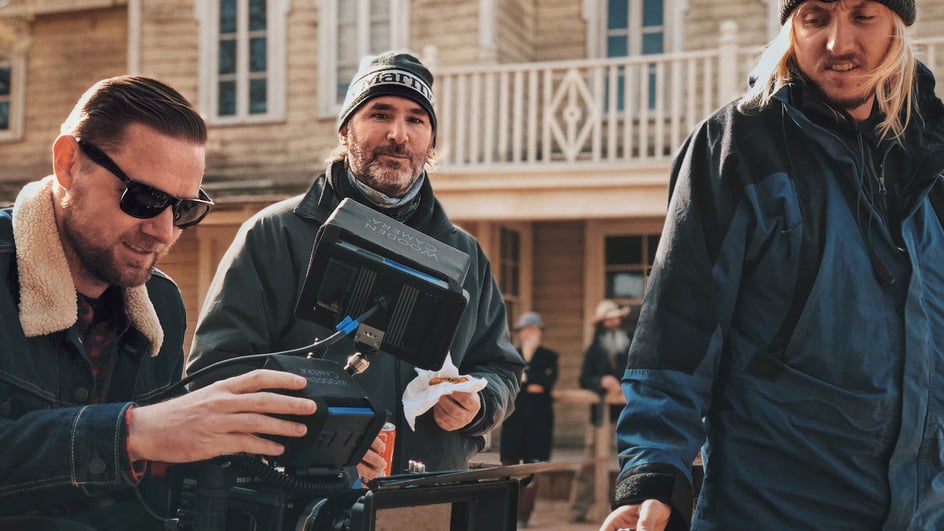
Jul 28, 2020
COVID-19 hit the freelance community hard.
But it also created a paradox: even though there were less gigs, people were staying inside and watching lots and lots of videos.
The demand for digital content skyrocketed, but safety protocols prohibited many video production freelancers from consistently finding work.
Now that restrictions are easing — at least somewhat — it’s becoming easier to hire freelancers. What’s more, the vast majority of freelancers feel comfortable working in the field at this point.
But that doesn’t mean video production is business-as-usual.
Things have changed, and that affects the way you vet and recruit talent. This article covers a few of the new rules to follow when you’re searching for freelancers to help produce your next video project.
1. Make Safety a Priority
Freelancers may be ready to work, but that doesn’t mean they should do so without taking proper precautions. It may go without saying, but implementing a sanitation routine is mission critical every time you shoot.
Both you and the freelancers you hire share this responsibility.
As the client, you set the standards. The onus is on you to let everyone know safety is the undisputed priority. To communicate your expectations and keep everyone safe, it’s a really, really good idea to document and distribute some guidelines to the entire crew.
When you’re looking for video production talent, ask each freelancer about how they approach sanitation. The more detailed their answer the better. Here’s a solid example of a good routine:
- Always wear a mask and gloves
- If someone is speaking on camera, walk them through how to put the lav mic on to maintain social distancing
- Disinfect the mic before and after someone puts it on
- In fact, go ahead and disinfect all of your equipment before and after every shoot
Sounds diligent, right? This is the standard you should be aiming for, because it’s the best way to protect anyone and everyone on set.
Even better, according to recent research 68% of freelancers in video production have their own health and safety protocol ready to roll.
And adhering to health and safety guidelines in videos isn’t taboo. In fact, it’s probably what most viewers expect.
2. Make Your Location Work
What does location have to do with finding good freelancers? More than you think.
Location has always been important, and the pandemic has only emphasized that fact.
First and foremost, if your video requires people in it, it might actually be better to film outside rather than indoors. (There’s a growing body of research to back this up.) And now that restrictions are being lifted, it’s easier for filmmakers to setup and work outdoors. So if the script allows for an outside shoot, that’s absolutely the best way to go.
Flying is a waking nightmare these days, so looking for local video production talent makes a lot of sense. You not only save on travel expenses, but also enlist someone who has firsthand knowledge of good locations to shoot in your area.
It’s one of those win-wins that everyone keeps talking about.
But what if you’re filming an ad spot for a sourdough baking convention and need to film inside? It’s not the end of the world, but you do need to be extra cautious and more creative.
The good news is there are numerous examples of how to tell compelling stories without having to commandeer a city block.
Outside of safety, a good location can provide a host of other benefits too. For example, a good location with copious natural light can provide the majority of what you need for the shoot. Rather than setting up a garden of artificial lighting gear, you can let the location do the heavy lifting.
An interesting location can also reduce the need for props and set design. If you’ve got a background that’s inherently cool, you won’t need to spend a lot of time (or money) trying to make a drab background work.
3. Hire for Bigger Projects
With the economy stuck in quicksand, budgets are being tightened around the globe.
Naturally, this leads to a slew of cost-saving platitudes: “how can we do more with less,” or “how can we get the biggest bang for our buck?”
These thoughts might be unoriginal, but they’re also realistic. We all know what it’s like to have every line item scrutinized — even if they’re completely logical.
When budgets get smaller, a lot of creative leaders get the idea that it’s better to create a lot of short videos. I suppose the idea is to win viewers by indoctrinating them with 3 minute videos.
Unfortunately, there’s not much evidence to support this approach works — unless you’re a huge news publisher.
In fact, when you look at the ROI of video content — something you’ll undoubtedly be asked about in these lean times — you’ll find that longer, grander videos typically deliver more value.
For example, Great Big Story produced an 18-minute piece about how COVID-19 has changed the human experience around the world. In just two months, the video has amassed over half-a-million views.
By comparison, shorter videos Great Big Story has published in the same time period have garnered a fraction of the views.
(Though I’m sure these pieces are superb. This is only a comparison of the ROI based on video length.)
So when you’re looking at hiring freelance talent, it might behoove you to look for people who have experience on larger, more complex projects.
That could mean someone who has more experience working on more complex projects, or a wider array of equipment to bring on set, or a greater range of skills that could be applied to a project.
Either way, teaming up with a freelancer who knows how to manage bigger projects will more than likely serve you well.
4. Trust the Pros
Look, it’s 2020 and there are a lot of different places to find freelancers. And where you recruit matters.
Yeah, you could go to a backwater hub where anyone and everyone scrounges for gigs like they’re in the Mos Eisley cantina. Or you could cruise the more reliable parts of the freelance galaxy and join forces with some truly talented individuals.
If that sounds good, then you might want to check out Storyhunter, the first freelance stop for brands like National Geographic, Airbnb, and CNN.
When you post a job on their platform, Storyhunter algorithmically matches the best qualified freelancers in their network to your requirements. Then top tier freelancers reach out to you about the gig. It’s basically search-free talent sourcing.
The world has changed, and it’s still changing. But the need for talented video production isn’t going away. In fact, the demand is probably increasing.
But you need to approach this kind of work from a different perspective these days. Adhere to the rules I’ve outlined above and you should have no problem finding skilled freelancers who can help you produce exceptional video content.
People also read:
